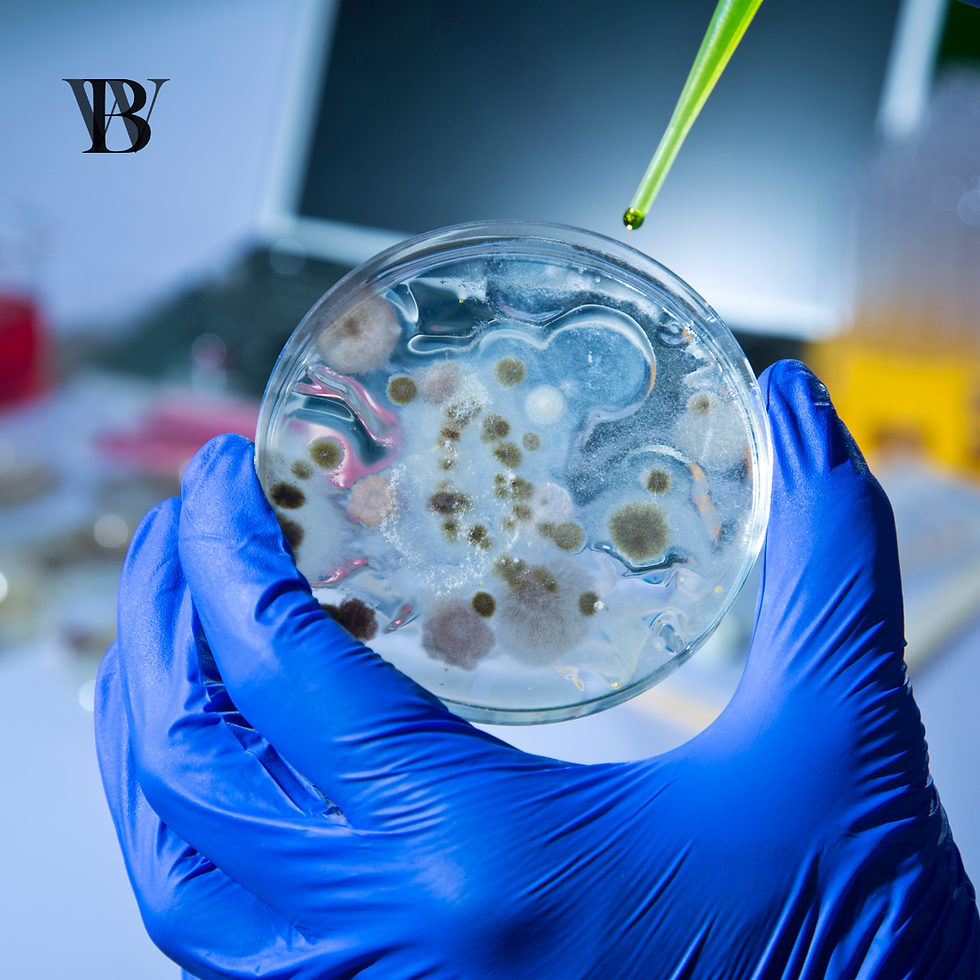ANTIMICROBIAL PEPTIDES – The remedy to the antibiotic resistance threat?
- Natalia Ramírez Comet

- Nov 5, 2024
- 3 min read
Antimicrobial resistance (AMR), which occurs when pathogens such as bacteria stop responding to medicines like antibiotics, is currently classified by the World Health Organization (WHO) as one of the top 10 global health threats.
Can you imagine being infected by a highly contagious bacteria when only talking to infected people? And that the same bacteria can acquire mechanisms to resist the killing capacity of two of our best antibiotics against it in many countries? And that in some countries the same bacteria even develop an additional resistant mechanism to one of the few antibiotics left able to kill double resistant bacteria?
You don’t need to imagine anymore. I introduce you to tuberculosis, a dangerous, silently developing, humanity killing weapon.
But tuberculosis is not alone in the antimicrobial resistance force. There is even an acronym, ‘ESKAPE’, to refer to six highly virulent and antibiotic-resistant bacterial pathogens: Enterococcus faecium, Staphylococcus aureus, Klebsiella pneumoniae, Acinetobacter baumannii, Pseudomonas aeruginosa, and Enterobacter spp. Mycobacterium tuberculosis, the bacteria causing tuberculosis, with around 1 million global deaths annually, is not even included among the six.
In fact, more than 35.000 people die annually from antimicrobial-resistant infections only in the EU/EEA, and WHO has predicted AMR to cause 10 million global deaths annually by 2050, which is the number of people now dying of cancer per year. But this is of course if science does not find any solution first. Is there any way to avoid going back to the medieval ages where people died by infections that today are simply treated with a few days of antibiotic treatments?
For some people, antimicrobial peptides (AMPs) could be the key to this conundrum. AMPs are a natural defense of many organisms against bacteria and other pathogens, and they can be artificially synthesized. Thousands have already been identified, and artificial intelligence is currently helping not only with their fast discovery but also with their characterization and even modification for a more targeted and less toxic effect in humans.
So, are AMPs THE method for us to be finished with bacterial infections?
Well, AMPs are not as different from antibiotics, and they usually have a weaker killing capacity. Nevertheless, they present some advantages over antibiotics, one being their structure, which allows them to permeabilize the outer membrane of Gram-negative bacteria, which is the layer that usually limit the entry of antibiotics into the Gram-negative bacteria, making them naturally resistant to many antibiotics.
Still, some Gram-negative bacteria naturally have some modifications in this outer membrane making them also AMP resistant.
AMPs’ most important advantage is probably that some of them present a multitarget mode of action, disrupting very different mechanisms for bacteria’s survival. While this is a huge advantage from the antimicrobial resistance perspective, as it would be challenging for the bacteria to develop several resistant mechanisms against the AMP at the same time in order to survive, it does come at a cost. This untargeted killing capacity of AMPs frequently affects human cells’ survival too, which means that some AMPs would cause toxicity to those patients that would receive the AMP treatment to cure a bacterial infection.
Another important drawback of AMPs is their low stability, being quickly inactivated in blood. Although this could be overcome by research on nanoparticles as a way to deliver and slowly release the protected AMPs in the body.
So, in my opinion, AMPs are unfortunately not THE key to end bacterial infections, but they could be a very useful weapon against bacteria when used in combination with antibiotics. However, they should be carefully prescribed, the same as for antibiotics, as recent research is demonstrating that bacteria can also become resistant to AMPs. Moreover, because AMPs are part of our natural defense system, bacteria could develop a cross-resistance to both, the AMP used as treatment and many other similar AMPs found naturally in our immune system, making our natural weapons against them useless. Finally, AMPs are known to interact with humans’ immune system, revealing the need for a deeper understanding of their action in human immunity before they become widely used as food preservatives, pesticides, disease-preventive in livestock or clinical settings.
Hopefully, the treatment of bacterial infections with a well-designed combination of antimicrobial peptides and antibiotics will slow down the appearance of dangerous resistant bacteria. In the meantime, parallel research in other bacteria killing methods, like the use of special virus that specifically kill bacteria (known as bacteriophages), methods to inactivate the resistant mechanisms usually developed by bacteria under antibiotics pressure or vaccines, will help end the threat of bacterial infection.




